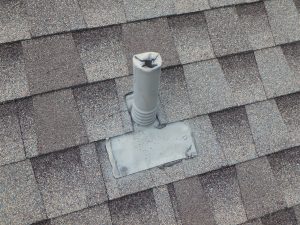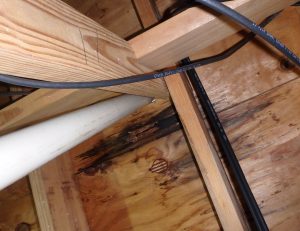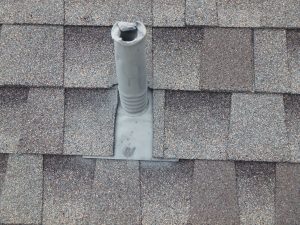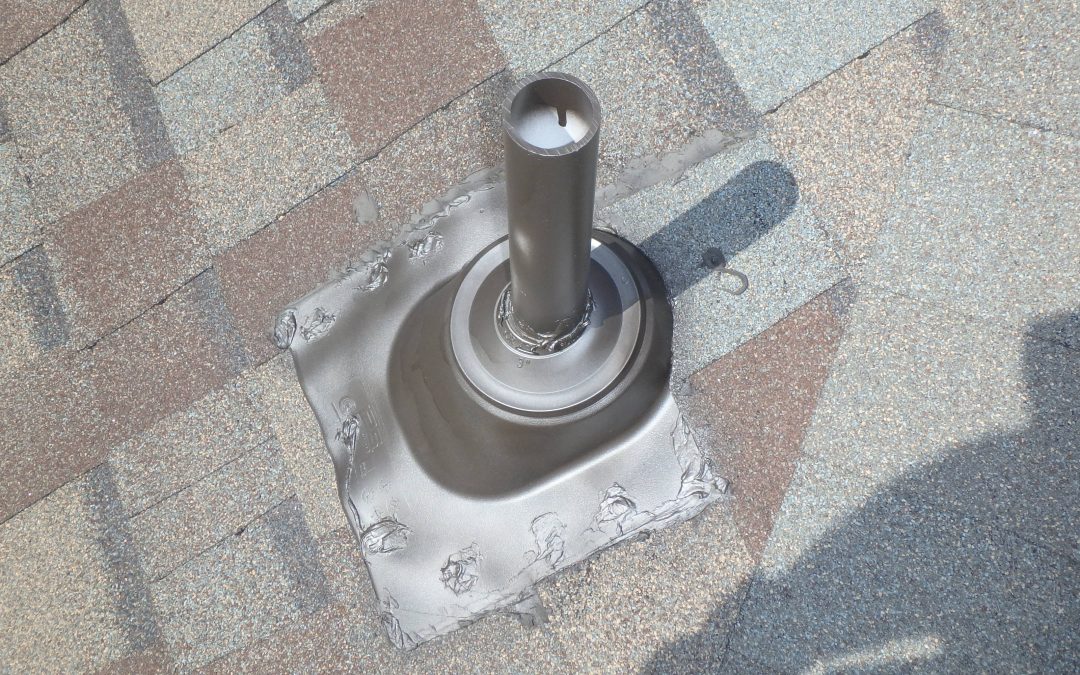Flashing used to seal penetrations through a roof system are commonly referred to as roof jacks in the Houston area. On a composition shingle roof, one of the most common roofs in our area, these flashing are often poorly installed by roofing crews creating a greater potential for water entry over the life of a roof system.

Improper lacing of a plumbing vent roof flashing.
One of the most common errors is installation of the flashing without properly lacing it with the surrounding roof surface as shown. When the flashing is improperly installed in this manner it leaves and excessive amount of the skirt exposed to the weather. In the most extreme cases this can allow water entry during blowing rains as water enters under the sides of the flashing. Often this is made worse by applying sealant down the sides of the skirt to attempt to seal this joint. Because the life of the sealant is less than the life of the flashing or roof system you can count on it being ineffective in a short period of time and possibly funneling water under the edge of the skirt as the sealant deteriorates. Another problem associated with improper lacing of the flashing in high wind areas is that it requires nails used to secure the flashing to be left exposed. This can allow water entry to the roof deck below as water runs in at the head and at the shanks of the nails. Even when sealant is applied to the heads and is maintained properly, water entry may still occur at the lower corners of the flashing skirt as water running down the edge of the flashing reaches the exposed shanks of the nails.

Damage Roof Decking
When properly installed, flashing for pipes and flues should be almost completely covered to the lower edge of the skirt. This will allow nails used to secure the skirt down to be covered completely by the shingles, which are themselves secured with roofing adhesive providing the best protection from water entry.

Properly Laced Roof Jack/Flashing


Recent Comments